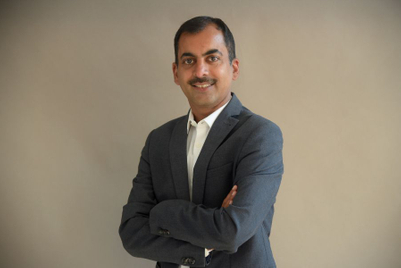.jpg&h=570&w=855&q=100&v=20250320&c=1)
India's digital landscape is buzzing with activity, with 640 million users diving into the open internet's diverse offerings. This space encompasses OTT/CTV, music streaming, online gaming, mobile apps, and news sites, capturing over half of users' digital time. Interestingly, young adults are particularly engaged with this open internet content, making it a prime spot for reaching today's digital-savvy audience.
Despite the high engagement levels on the open internet, advertising spend hasn't kept pace. The Trade Desk’s report, ‘India’s engaged audience: Why the open internet is the new premium’, reveals this discrepancy.
Talking to Campaign, Tejinder Gill, general manager at The Trade Desk, highlights that many digital marketers in India stick to traditional platforms like TV and social media. This reluctance to shift to emerging channels like CTV or OTT is noted as a missed opportunity.

“What India’s top advertisers are waking up to now is the power of the open internet as an alternative to walled gardens,” he explained. Gill also emphasised that 52% of online time by Indian consumers is spent on open internet channels, not search or social media—a figure that no advertiser can afford to sneeze at. Additionally, the open internet allows marketers to use data to expand their audience across a wide array of websites, apps, podcasts, and streaming platforms.
An open playground beckons all
The open internet covers a wide range of digital platforms, including ad-supported OTT/CTV services like Zee5, Voot, or JioTV, music streaming platforms such as Spotify and JioSaavn, and news sites like India Times and Hindustan Times. This contrasts with walled gardens controlled by tech giants like Google, Facebook, Instagram, and YouTube, which handle their own content and ad measurement systems.

Young consumers are shifting their attention to the open internet, leading to higher engagement with content on these platforms compared to traditional social media. They also show a preference for ads on music streaming services, finding them more trustworthy and less intrusive compared to social media ads. This trend underscores a desire for more genuine and less disruptive advertising.
The open internet's rise presents marketers with a significant advantage. It allows for better control over ad placements and greater transparency in tracking campaign results. By analysing consumer behaviour across diverse platforms, brands gain clearer insights into their ad spend, reach, and engagement, which is often fragmented in walled gardens.
The report shows that while ad spend in India has traditionally concentrated on platforms like Google, Facebook, and YouTube, there’s a shift towards embracing the open internet. Taking a leaf out of the US playbook, Indian ad budgets are also beginning to align with where consumers are spending their time.
Gill points out a challenge with this transition: each walled garden provides its own metrics, making cross-platform performance comparison difficult. “The open internet brings together what used to be a fragmented landscape and sheds light on campaign performance in a way that was not possible before,” he stated. He advocates for a more transparent digital advertising environment where effectiveness can be independently verified.
The best of both worlds
Marketers are gradually moving beyond traditional platforms to embrace the expanding open internet. They are adapting to where audiences are most active—streaming shows, listening to music, or gaming online.
However, only 15% of India’s advertising spend currently goes to the open internet, highlighting a significant untapped opportunity for brands to connect with audiences spending quality time online. In the past two years, ad spending on India’s open internet has surged due to the rise of platforms like OTT/CTV, music streaming, and online gaming. Research from The Trade Desk shows that nearly 80% of Indians are spending more time online, with 76% expecting this trend to continue.
Among younger users (ages 18-34), OTT/CTV and music streaming are particularly popular for premium content. One-third of Indians prefer OTT/CTV for exclusive shows and films, viewing these platforms as more premium compared to YouTube. Ads on OTT/CTV are perceived as higher quality, leading younger users to favour them over social media platforms.
Gill notes that with digital content now spread across multiple platforms, reaching the right audience with relevant ads has become complex. Each user has unique media consumption habits, requiring brands to deliver personalized ad experiences. “Given that digital content is sprawling across multiple platforms, reaching the right people with ads that are relevant to them has become increasingly complex,” he stated.
OTT/CTV: Where India heads for premium content
The shift to data-driven advertising, using AI and advanced analytics, has revolutionised digital marketing. This approach, focusing on understanding user preferences and lifestyles, enables highly targeted campaigns.
In India, this shift has been particularly impactful, with advertising leaders seeing audience-first programmatic methods as a major advancement. Marketers are encouraged to rethink traditional strategies and focus on audience-specific insights to connect effectively with all demographics.
In today’s world of endless scrolling and auto-generated feeds, a crucial question emerges: where are people spending their quality time online? Research reveals that Indians are more engaged with the open internet compared to social media.
About 33% of young adults find content on the open internet engaging, while only 29% feel the same about social media. This engagement difference stems from how users interact with content—actively seeking information on the open internet versus passively scrolling on social media. Additionally, 27% of young adults find social media ads irritating, whereas ads on music streaming platforms are perceived as less intrusive.

The Trade Desk's research also highlights how user engagement varies throughout the day. Mornings often involve checking news and music streaming, afternoons are for online gaming, and evenings are dedicated to watching TV shows and movies on OTT/CTV. Aligning marketing strategies with these patterns allows brands to deliver messages more effectively, targeting consumers at optimal times and platforms.
Understanding where trust is strongest can guide advertising strategies. Research shows that over 40% of Indians find ads on the open internet trustworthy. Among young adults, OTT/CTV is the most reliable channel, with them being 16% more likely to trust ads there compared to social media.
Gill highlights this shift, noting that while 40% trust in open internet ads might seem modest, the growing trust in OTT/CTV reflects a trend where younger consumers are more selective about content and sources. Social media struggles with issues like misinformation and intrusive ads, with 27% of young adults finding them annoying. Adapting to this shift can help brands build stronger connections with their audiences.
The open internet offers brands the advantage of using their own first-party data for accurate audience targeting across various channels, overcoming the limitations of walled gardens. This approach ensures that ads reach their intended audience and make a meaningful impact.
Gill pointed out, “Walled gardens tend to mark their own homework without any independent verification.” He emphasised the need for a transparent environment where effectiveness can be independently measured. The open internet provides this transparency, allowing marketers to assess performance across diverse platforms and make better-informed decisions.


.jpg&h=334&w=500&q=100&v=20250320&c=1)
.jpg&h=334&w=500&q=100&v=20250320&c=1)
.jpg&h=334&w=500&q=100&v=20250320&c=1)


.jpg&h=334&w=500&q=100&v=20250320&c=1)








.jpg&h=268&w=401&q=100&v=20250320&c=1)



